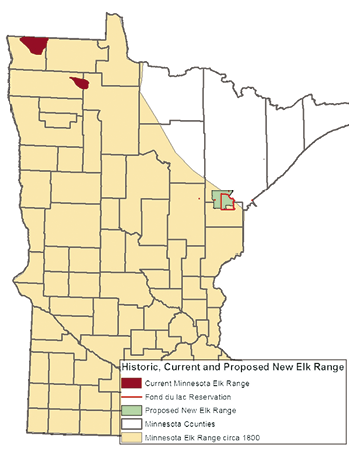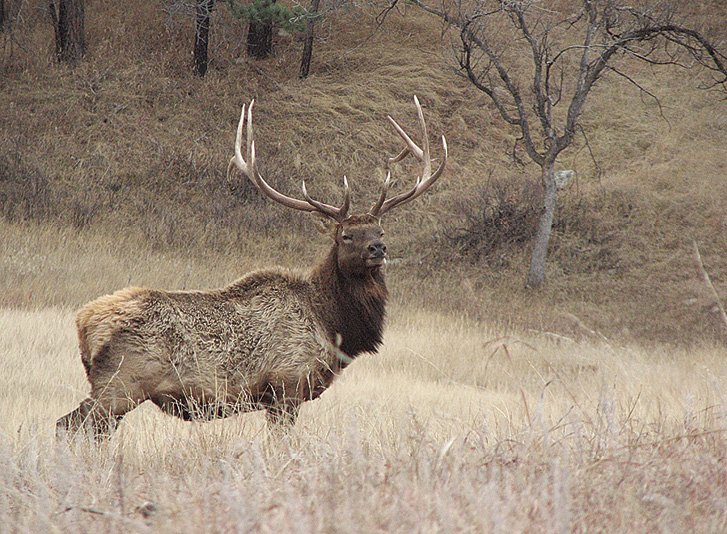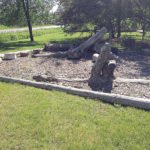The Fond du Lac Band recently submitted a proposal to the Minnesota DNR to expand the state’s elk numbers and range by moving 100-150 elk from existing herds in northwest Minnesota to the area of the Fond du Lac Reservation and Fond du Lac State Forest in Carlton and southern St. Louis counties.
Elk are native to Minnesota with historic numbers once estimated in the thousands and whose range encompassed most of the state. Known as omashkooz by the Ojibwe, they were important to the diet and culture of Native Americans. Today, Minnesota’s remaining elk are confined to two small herds in the far northwest comer of the state where one of the primary uses of land is agriculture. As part of an effort to balance wildlife conservation with agricultural production needs, elk numbers are held in check through regular hunting seasons.
In 2014, the Band initiated an effort to explore the feasibility of restoring elk to three different areas in or near their historic range in northeast Minnesota. The Band partnered with the University of Minnesota and the Rocky Mountain Elk Foundation. In 2016 the University received a grant from Minnesota’s Environment and Natural Resources Trust Fund to research levels of public support and potential suitable habitat for elk in northeast Minnesota. The University completed these feasibility studies in August, 2019, and results indicated strong support for elk amongst landowners and the general public. The studies also analyzed habitat suitable for carrying approximately one elk/square mile, which indicates the proposed restoration area has a biological carrying capacity of approximately 287 elk.
“The Band’s Reservation Business Committee believes restoring a wild elk population to areas where band members retain their historic treaty rights is in the Band’s best interest,” says Fond du Lac Tribal Chairman Kevin Dupuis Sr. “Elk have historically been, and continue to be, an intrinsic part of our culture and traditions.” 
The majority of land in the proposed restoration area is forested and in state, county or tribal ownership. Large farms and row crops like com and soybeans don’t dominate the landscape as they do in northwest Minnesota. Elk are proposed to be moved over a period of three to five years as their numbers exceed established population goals in northwest Minnesota. The Band proposes any elk moved should first be required to undergo appropriate health screenings, and then monitored post-release to evaluate the effort in order to assess elk movements, mortality and any areas of conflict. To be successful this project will require support and collaboration with the Minnesota DNR and other public and private partners. Before moving forward, a period of inter-agency planning as well as public review and input should follow to refine this proposal, develop capture and handling protocols, and write post release state and tribal elk management plans. The Band proposes initial planning efforts with the Minnesota DNR begin this year with a goal of moving the first elk in 2025.
The Band’s long-term objectives for elk restoration include: allowing elk to once again play a role in the diet and culture of the region’s native peoples, restoring an elk population, providing recreational opportunities through elk viewing, boosting local economies in an area of the state primed for ecotourism, providing future hunting opportunities for tribal and nontribal members, and restoring a species likely to adapt well to future climate change.
A link to the full proposal can be found at: fdlrez.com/RM/wildlife.htm.




